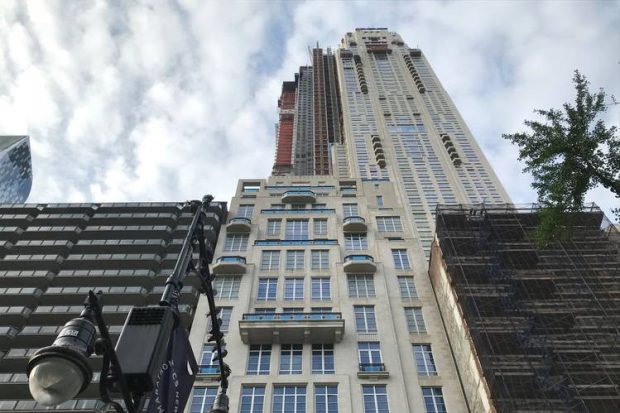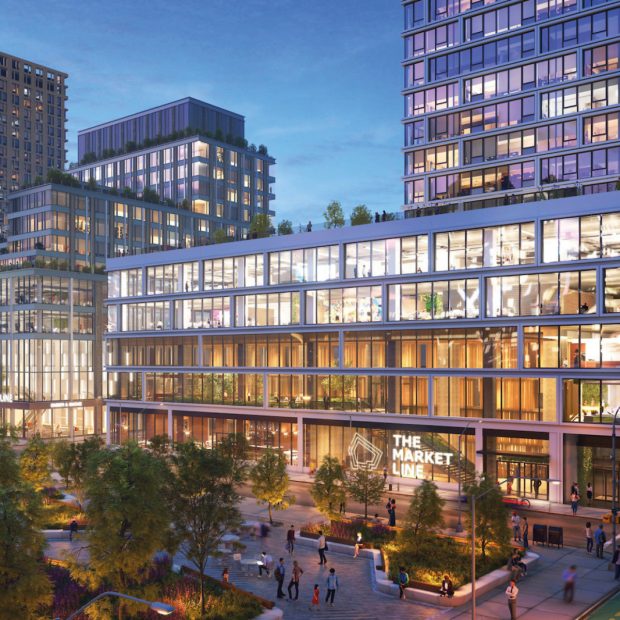
The landscape of Manhattan’s real estate is experiencing a significant transformation as nearly half of the new luxury apartments built since 2019 remain vacant. This shift is attributed to changing preferences among wealthy buyers, seeking more affordable and less centrally located housing options.
A key factor contributing to the high vacancy rate is the increasing appeal of cheaper areas outside Manhattan. Improved public transport and infrastructure in these regions have driven residents to opt for newer, more cost-effective housing options.
While the demand for affordable housing remains substantial, the construction boom has led to a surge in popularity in areas such as Brooklyn and Queens. The South Bronx has also witnessed a rise in functional construction projects.
Despite these shifts, the pressing issue of affordable housing in New York persists, with approximately 79,000 people living in shelters or on the streets.
In Manhattan, the sale of new luxury apartments, even in prime locations, can extend beyond six years. The real estate analytics group Nancy Packes Data Services reports that 3,695 out of 7,727 apartments built since 2015 remain unsold. The aftermath of the 2008 financial crisis prompted overseas investors to seek higher returns, leading to a surge in the construction of spacious and expensive apartments tailored for the wealthy.
Many of these luxury projects were backed by investors who utilized the EB-5 investment visa program. Notably, the Hudson Yards complex in Manhattan received a substantial $1.2 billion from such investors, making it the most expensive housing project in the city’s history. While the EB-5 visa program typically targets rural or economically distressed areas, Manhattan received preferential treatment, resulting in an array of skyscrapers and exclusive housing developments.

The consequences of this luxury development trend include an oversupply of high-end apartments, creating challenges in the real estate market. Despite Manhattan’s reputation as a premium real estate destination, the current scenario suggests a paradigm shift towards smaller and more affordable housing options to meet the evolving demands of the market.
The Manhattan luxury real estate market is grappling with significant challenges, as evidenced by the stagnant sales of high-end apartments and a decline in interest among affluent buyers.
An apartment spanning 310 square meters, priced at almost $22 million, has remained unsold on Zillow for nearly a year. Even more affordable options, such as a 180-square-meter apartment for $2.5 million, have faced challenges, with sellers compelled to reduce prices by several hundred thousand dollars. The combination of taxes, economic uncertainties, and adverse changes since 2015 has contributed to a diminishing appeal among wealthy buyers.
Nancy Packes, Director of Nancy Packes Data Services, acknowledges the inherent volatility of the luxury real estate market. The market’s sensitivity to economic shifts and evolving buyer preferences underscores the need for developers and sellers to adapt to changing dynamics.
The high pricing of luxury real estate has created a divergence between buyers seeking residences and investors aiming for profitable housing ventures. In 2011, the average price of a new apartment soared to $1.15 million, marking a 9% increase compared to resale prices. This has resulted in an oversaturation of unsold luxury apartments, with a reported 7,050 new units available in Manhattan that have never been sold, according to a Halstead Development Marketing report.
The segment of real estate priced between $5 million and $10 million is facing congestion, prompting many developers to temporarily halt new projects until existing properties are sold. To entice buyers in this competitive market, developers are resorting to substantial discounts to facilitate property transactions.

While luxury apartments play a substantial role in supporting the project, the inclusion of affordable housing aims to address the demand for more budget-friendly residences.
READ: Investing in Brooklyn Real Estate: Detailed Review
To meet the demand for affordable housing, both builders and buyers are expanding their focus beyond Manhattan’s central areas. Brooklyn has emerged as a prime destination, witnessing a significant surge in rents. Seven out of the ten areas experiencing the most substantial rent increases over the past decade are situated in Brooklyn. Notably, the Williamsburg and Greenpoint neighborhoods in northern Brooklyn have topped the list. However, critics express concerns that these escalating housing costs may render the residences unaffordable for permanent residents.
READ: Dubai Opportunities: Profitable and Reliable Investments
As the real estate landscape undergoes transformations, the integration of affordable housing initiatives and the geographical shift away from Manhattan’s center mark key strategies in addressing the evolving needs of both developers and residents.
Like us on Facebook for more stories like this: